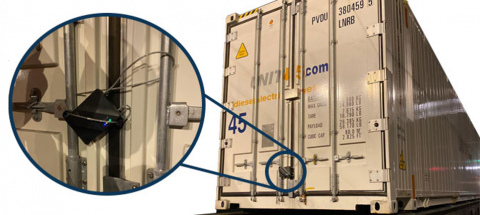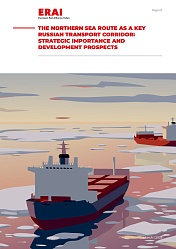A little bit of background may help to understand the importance of the route. In June 2019 the Russian government announced that it would lift the ban on overland transport of sanctioned goods such as fresh foods and agriculture products. This is an opportunity for European shippers. Until now they were bound to air or ocean freight, or had to take a detour when opting for the train for their shipment of sanctioned goods. After the announcement, a long period of preparations followed. In March the first train with sanctioned goods took off.
The most radical change is the mandatory application of an electronic seal, which gathers real-time data of the journey through Russia. This seal is installed on the door of container when it enters Russia and removed when it leaves Russia.
Where does this procedure take place?
This depends on the route, explains Yulia Kosolapova, managing director of FELB. «For both routes, the point of application is Smolensk. The route via Kazakhstan is the one tested so far and on this route the seal is removed in Kartaly 1. Currently we are finalising tests of the Trans-Siberian route via Zabaikalsk/Manzhouli. The seal is then removed in Zabaikalsk.»
«The seal is applied by representatives of RZD and the Centre for Development of Digital Platforms.»

The application of the seal may change the logistics industry. The journey may take little bit longer, and more people may be involved. At the moment, this is not yet the case, explains Kosolapova.
According to the managing director, the procedure is not very complicated. «A seal must be applied on each container with sanctioned goods. This takes around 10 minutes. It is a simple procedure.» At the moment, the sealed container is part of a train with regular containers. In the future, there may be multiple sealed containers on a block train, or complete block trains.
What must the customer do?
Although the customer is not directly involved with the application of the seal, there is additional documents that should be presented before the transportation. «It is important to emphasise that apart from the standard list of documents it is required to provide a certificate of origin and a veterinary certificate for sanctioned cargo. If these documents are not provided, the shipment could not be accepted on a train. This is the most important thing a customer should know.»
Which challenges have you faced so far?
Although the test shipments are considered successful, there are still a few hiccups, Kosolapova describes. «Import requirements in China for each type of sanctioned cargo have to be considered. It may be different for each province in terms of possibility of terminals, or availability of local veterinary control.»
What happens with the information?
«The electronic seal works on the basis of satellite navigation GLONASS (Russian equivalent of GPS), which gives the opportunity to generate very accurate information. But this information is needed just to be sure that there is not any delivery or unloading of containers with sanctioned cargo on Russian territory. The electronic seal tracks the position of the container online and detects any broken seal. If such case is registered, it immediately indicates that the container is opened. Therefore, it does not only ensure compliance with Russian regulations but also provides improved security of cargo», says Kosolapova.
Does this mean the end for other track and trace systems?
«No. Customers should still apply their own track and trace systems. Maybe in the future, this system could replace the existing systems, but this has not yet been discussed.
When is this a regular service?
«At the moment, we have succesfully completed a testing phase. It is important for any new service to be tested. In this way even tiny defects could be discovered and have to be solved. Bookings are increasing and now this service is becoming a regular one », says Kosolapova.
The first shipments included milk powder and salmon. New shipments are underway with meat products and again milk powder. These are all products high in demand in China. «The prospects of this service is huge. There is a real demand for these fresh goods in China and it has a growing trend. Currently customers have to get used to the idea that this could be done by rail but our successful shipments prove it.»





